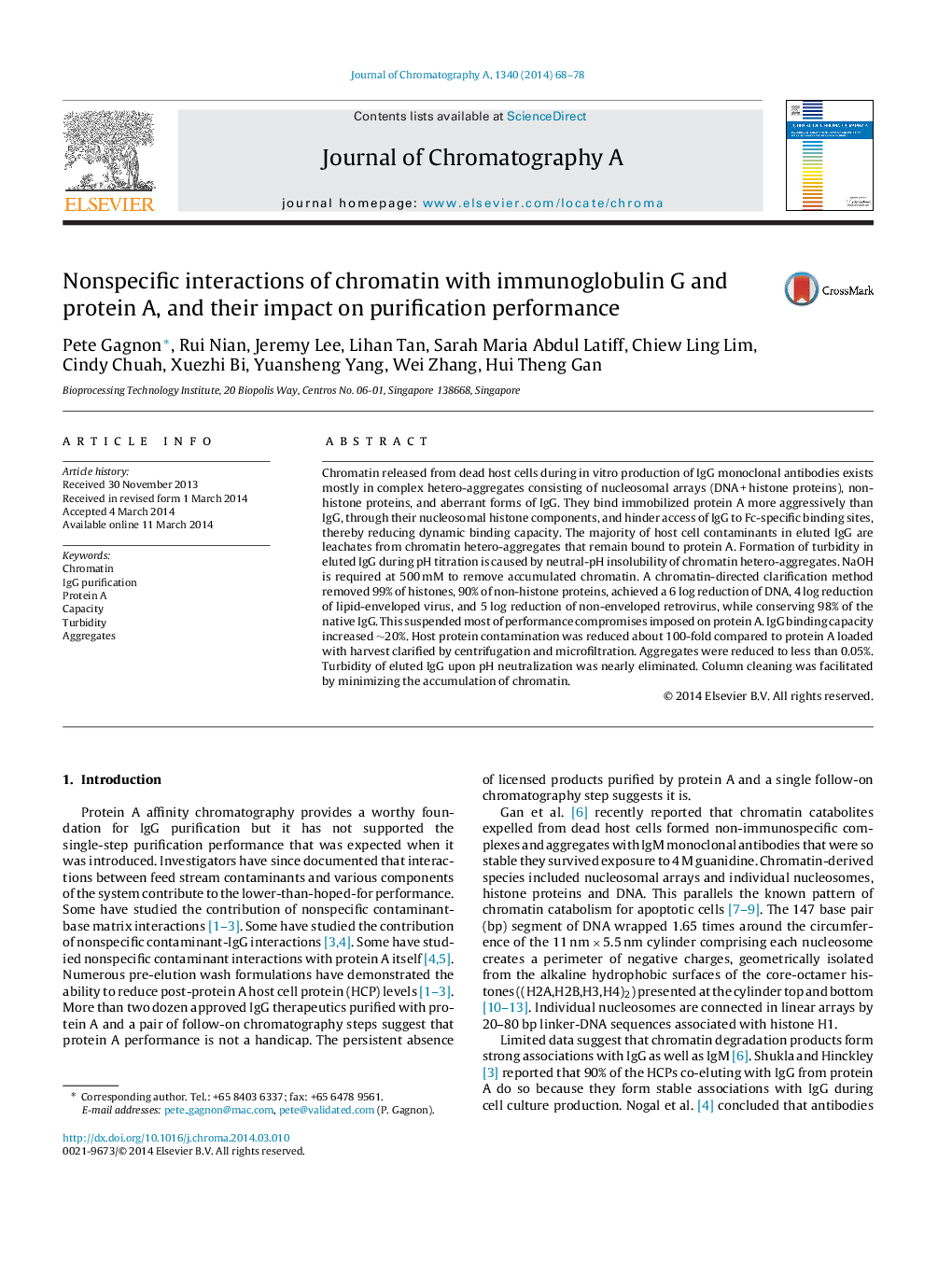| Article ID | Journal | Published Year | Pages | File Type |
|---|---|---|---|---|
| 7613114 | Journal of Chromatography A | 2014 | 11 Pages |
Abstract
Chromatin released from dead host cells during in vitro production of IgG monoclonal antibodies exists mostly in complex hetero-aggregates consisting of nucleosomal arrays (DNAÂ +Â histone proteins), non-histone proteins, and aberrant forms of IgG. They bind immobilized protein A more aggressively than IgG, through their nucleosomal histone components, and hinder access of IgG to Fc-specific binding sites, thereby reducing dynamic binding capacity. The majority of host cell contaminants in eluted IgG are leachates from chromatin hetero-aggregates that remain bound to protein A. Formation of turbidity in eluted IgG during pH titration is caused by neutral-pH insolubility of chromatin hetero-aggregates. NaOH is required at 500Â mM to remove accumulated chromatin. A chromatin-directed clarification method removed 99% of histones, 90% of non-histone proteins, achieved a 6 log reduction of DNA, 4 log reduction of lipid-enveloped virus, and 5 log reduction of non-enveloped retrovirus, while conserving 98% of the native IgG. This suspended most of performance compromises imposed on protein A. IgG binding capacity increased â¼20%. Host protein contamination was reduced about 100-fold compared to protein A loaded with harvest clarified by centrifugation and microfiltration. Aggregates were reduced to less than 0.05%. Turbidity of eluted IgG upon pH neutralization was nearly eliminated. Column cleaning was facilitated by minimizing the accumulation of chromatin.
Related Topics
Physical Sciences and Engineering
Chemistry
Analytical Chemistry
Authors
Pete Gagnon, Rui Nian, Jeremy Lee, Lihan Tan, Sarah Maria Abdul Latiff, Chiew Ling Lim, Cindy Chuah, Xuezhi Bi, Yuansheng Yang, Wei Zhang, Hui Theng Gan,
